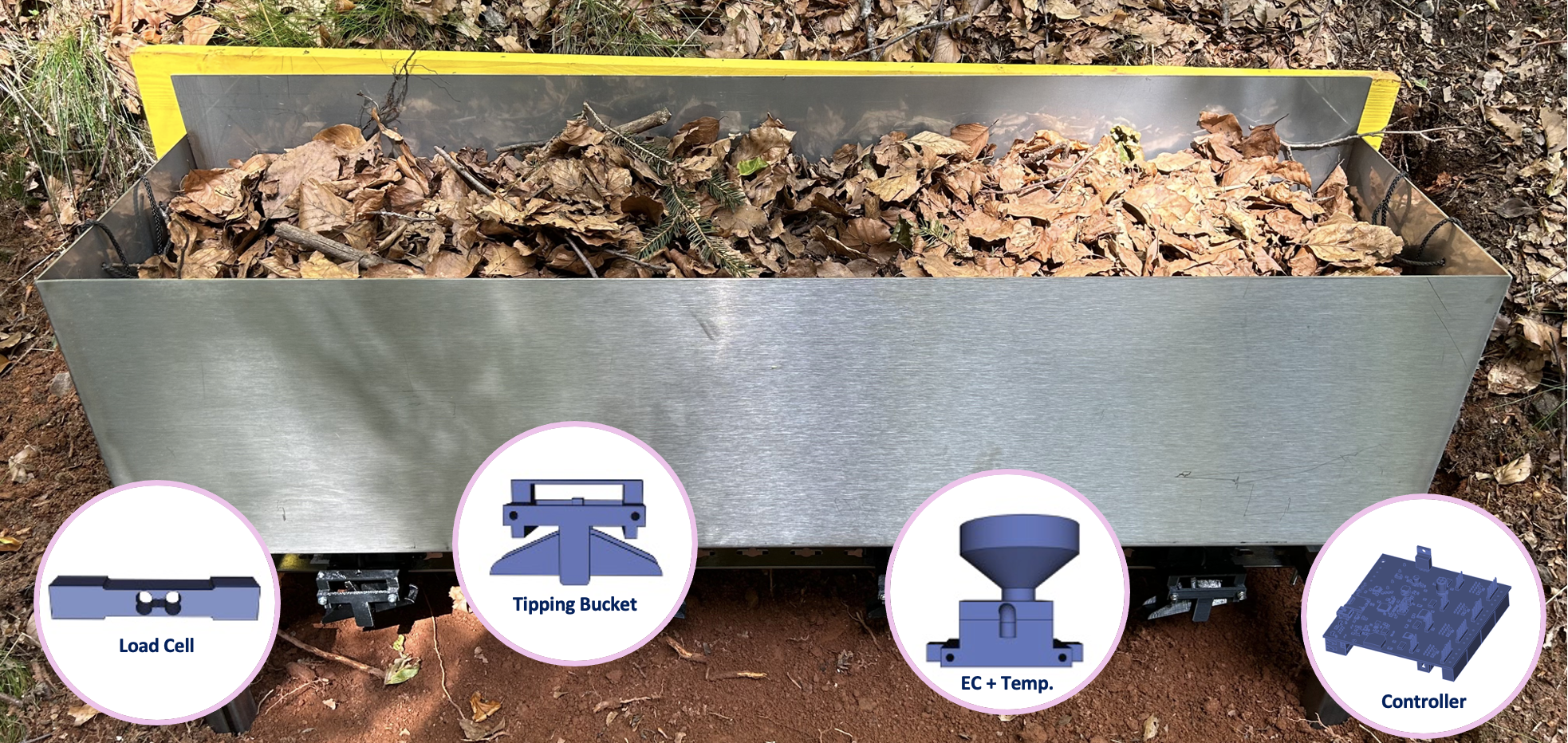P01 Water storage and redistribution in the forest floor affect percolation, evaporation and DOM loss
Concerning the overall hypotheses of the Research Unit we in Project 1 investigate the Forest Floor (FF) related dynamics of water and dissolved organic matter (DOM). A detailed knowledge of the hydrological processes of the FF is urgently needed to link above and below ground processes in forests as well as to predict the effects of changes in the FF on hydrology and carbon cycling.
This project aims to link the spatial and temporal variability of water fluxes and water storage in the FF with the fluxes of DOM and their feedback to the atmosphere and the underlying mineral soil.
We will achieve this by developing a novel weighing Grid-Lysimeter with continuous measurements of dissolved organic carbon (DOC) and electrical conductivity (EC). The DOC concentration will be quantified by optical fluorescence and absorbance measurements directly below the lysimeter using a combination of LEDs, photodiodes and filters. This will allow us to observe and analyze water and DOM fluxes at a high spatio-temporal resolution at all study sites and to have several replicates within the forest.
Additionally, we will measure the temporal change of hydrophobicity and its effects on preferential flow by including experiments using wetting agents to eliminate hydrophobicity. Since hydrophobicity may have a pronounced effect on the hydrological functions of the FF, we plan to observe the temporal changes of hydrophobicity in the field. As no sensor is available to measure hydrophobicity continuously, we will use the simple water drop penetration time test (WDPT) to observe the changes in water repellency of the FF over time.
Altogether we will provide detailed information about the storage capacity and flow pathways of the FF and its relation to FF properties. The spatio-temporal pattern of water and solute fluxes from the FF to the mineral soil will be analyzed on their temporal persistence, seasonal dynamics in relation to hydrophobicity, and their influence on infiltration patterns. The variability of storage properties and leaching potential will be derived. In addition, the influence of FF thickness and type on soil evaporation will be analyzed. Thereby P1 will strongly contribute to the overall understanding of FF processes and thus the impact of FF on soil hydrology, trees, soil fauna, microorganisms as well as SOM and nutrient supply.

Forest Floor Grid-Lysimeter to quantify water fluxes from and to the Forest Floor.
| Duration |
Sep 2022 - Aug 2025 |
|
| Institution: |
University of Freiburg Chair of Hydrology |
|
| Projekt Investigator: | Prof. Dr. Markus Weiler | |
| Phd candidate: | M. Sc. Heinke Paulsen | |
| contact | Heinke.paulsen(a)hydrology.uni-freiburg.de |

